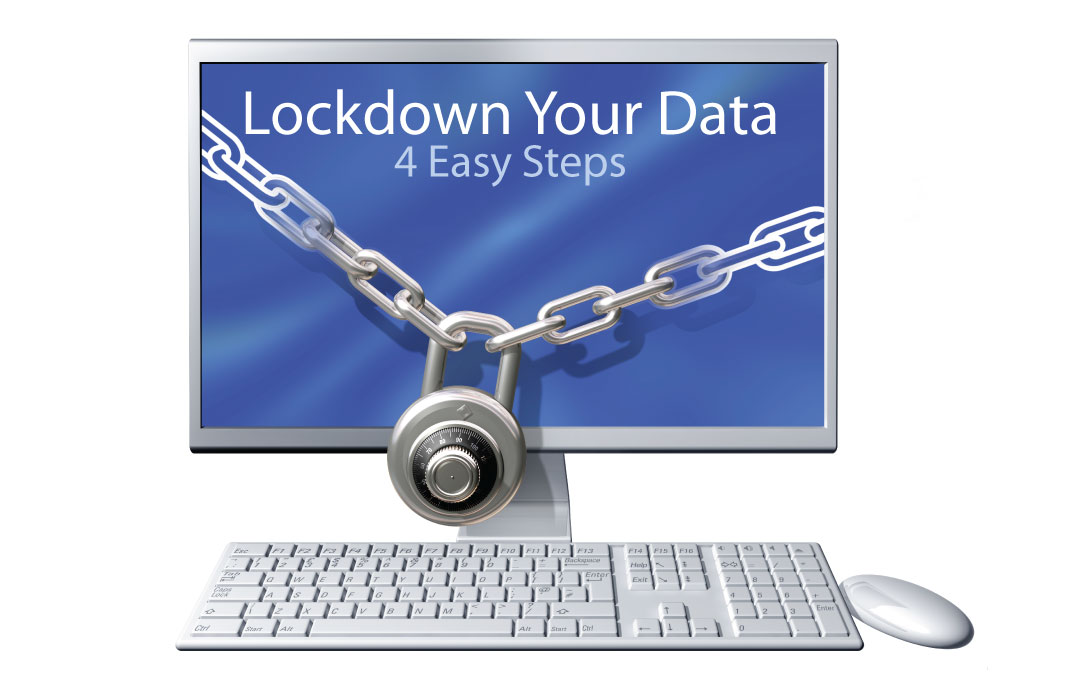Lockdown Your Data

Your company runs on financial, customer, and product data. As a small business owner, it’s your responsibility to protect all three. Failure to do so can result in business losses, legal liability, and diminishing customer goodwill. Lock down your data with the following four strategies:
Secure Your Hardware
Physically locking down your computers – both at the office and at the coffee shop – discourages theft. Thread a cable through your laptop’s Kensington lock port to secure it to your desk. Do the same with your network storage devices – or opt for more robust solutions such as rack-mounting hardware, or locking your server room doors. Tracking software from companies such as Prey and LoJack permit you to locate lost or stolen devices, and remotely erase your personal information.
Encrypt Your Data
All of your company’s sensitive information – including customer payment data, employee social security numbers, and financial data – should be encrypted. Full-disk encryption tools, such as BitLocker for Windows and FileVault for Macs, will secure all of the data on your drives. Encrypting your drives used to be a complicated procedure that really slowed your computer’s performance. Today, your trusted IT professional can install and prepare the software, so no data is lost and network performance stays optimal. If your employees rely on unsecured public WiFi networks in the field, protect your data in transit with a VPN. Once they’ve logged in, remote employees can securely share data with your office, since everything is encrypted.
Lock Down Your Network
Your Wi-Fi network can be compromised via a technique known as wardriving, whereby data thieves search for vulnerable networks, in hopes of stealing passwords and financial information. Though it lacks the convenience of wireless, a wired network is your best defense against this type of attack. Wired networks are inherently more secure, since users can only connect by plugging into physical outlets or modem ports. If your business relies on the convenience and flexibility of wireless, you can mitigate your risk of being hacked by asking your IT provider to disable the service set identifier (SSID) broadcasting function on your wireless router. This renders your network invisible to casual Wi-Fi snoops, and accessible only to those users who know your exact network name. If you’re using this technique, you should choose a network name that is difficult for an attacker to guess. Ensure that your network is using WPA2 – the latest encryption standard – and a complex Wi-Fi password for maximum security.
Guard Against Viruses And Malware
Malicious email attachments, deceitful website downloads, and clever software exploits can be used to capture keystrokes and login information – and antivirus software is your first line of defense. Longtime computer users can recall expensive antivirus software that bogged down their computer, but these applications have improved drastically in recent years. Your IT professional can suggest the perfect anti-virus solution for your system. By running regular system updates and applying security patches to your applications you can further mitigate your risk of infection.
It doesn’t take much to ensure your data is safe and secure. By focusing on IT security your business will stay in compliance with regulations, earn the trust of your clients, and you can be assured that your company is positioned to adapt to technological change. By hiring an IT firm you can trust, you can rest easy knowing your data is on lock down.
